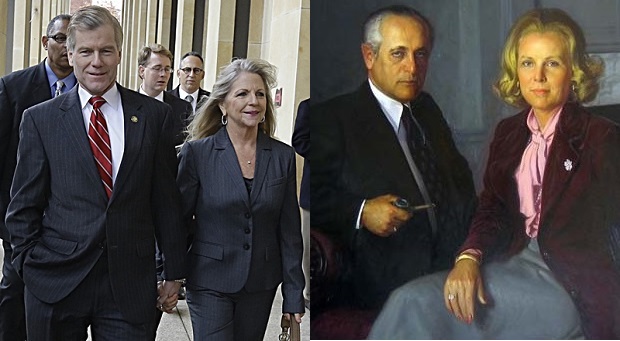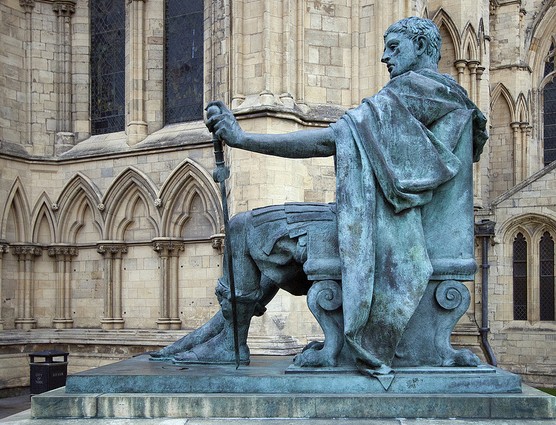Some vote counting scandals receive front page news coverage and shock the world; others remain invisible. Such is the difference between Florida’s 2000 presidential election and Maryland’s 2010 referendum to convene a state constitutional convention. Both involved vote counting practices more associated with petty dictatorships than advanced Western democracies.
The first article of Maryland’s Declaration of Rights grants Marylanders the right to reform their government when the legislative branch prefers the status quo, as in its practice of pro-incumbent legislative gerrymanders. This right was implemented in Article XIV of Maryland’s Constitution, which mandates that a referendum on whether to convene a constitutional convention automatically be placed on the ballot every twenty years, with the requisite majority to pass the ambiguously defined “majority of voters at such election or elections.” The primary alternative way to bypass an intransigent legislature, the initiative, is not available in Maryland.
An ordinary majority
The 2010 referendum received a 54.4% ordinary majority (that is, a majority of those voting on it), which is the type of majority tallied on the referendum from 1851 (when the referendum was created) to 1930. Since 1930, Maryland’s legislature has claimed the ambiguous text mandates an extraordinary majority, a majority of those voting on any proposition on the ballot. No court has ever ruled on the correct interpretation of the text.
(Editor’s Note: Today’s ballot Question 7 to expand gambling also requires “a majority of the qualified voters in the State,” interpreted to mean a simple majority of those voting on it. But a lawsuit was filed Friday contending that at least the higher majority required for the constitutional convention should be applied. For a related op-ed by the author, see, On gambling vote, what is meant by a ‘majority’? )
Unfortunately, calculating such a majority denominator is not self-evident and has involved choosing among many possible proxy denominators. In 1930, Maryland’s election administrator chose the vote for governor as the proxy. This proxy suited the legislature’s goals of defeating the referendum and thus preventing a convention from reapportioning legislative districts based on population (something the rural-controlled legislature wouldn’t do until forced by a 1964 U.S. Supreme Court ruling).
Administrator changes method
In 2010, an administrator at Maryland’s State Board of Elections changed the proxy to those hitting the submit button on the touchscreen voting machines, plus adjustments for absentee and completely blank ballots. This increased the size of the majority by 7,404 votes over the gubernatorial proxy. In contrast, if the Elections Board had chosen the common alternate proxy of the previous rather than current gubernatorial vote (when referenda can be submitted at any election, the previous gubernatorial proxy allows for greater consistency), the referendum would have passed with a 50.2% majority (instead of losing with 48.3%).
The 2010 change violated core democratic principles because it was created not only by administrative fiat but also after the election and without public notice. Just think how the West reacts when a dictator seeking the mantel of democratic legitimacy conducts an election but waits until votes have already been cast and counted before deciding how to tally them.
A Public Information Act request to the elections board disclosed no relevant documents, except possible advice from Maryland’s Attorney General kept secret under “attorney-client privilege.”
Various practical and legal reasons explain why Maryland didn’t previously use simple ballot counts to count voters voting at an election. For example, consider the federal government’s mandate that an absentee ballot including only federal offices be sent to overseas military personnel (the U.S. Constitution may not grant the federal government authority to mandate that state and local propositions be included on absentee ballots). Since such ballots didn’t include state referenda, it’s obviously unfair to count such ballots as no votes. Yet that’s what Maryland did.
What the legislature should do
Unlike the 1930 precedent, the 2010 change in the majority denominator didn’t change the election outcome. But it made the election appear substantially closer, a perception the legislature favored (not a single member of the legislature publicly supported a yes vote, which would have led to anti-incumbent redistricting reform in Maryland). It thus reduced the political pressure on the legislature to convene a constitutional convention, which was within its power to do.
More importantly, who knows what self-serving denominator the legislature will endorse next time? Consider that when the U.S. Supreme Court reviewed the Florida vote in 2000, presidential candidates Gore and Bush differed by less than 200 votes. Here the level of vote counting discretion was at least 37 times as much—and in a state a third Florida’s size.
Such shenanigans shouldn’t be allowed to reoccur. After a duly noticed public hearing, the legislature should codify in law how it wants to calculate the required majority. It should prevent Maryland’s Attorney General from hiding secret laws by misusing the “attorney-client privilege.” It should make the vote-counting process more transparent and accountable, especially when both political parties have a joint interest adverse to the public.
–J.H. Snider is the president of iSolon.org and a fellow at the Edmond J. Safra Center for Ethics at Harvard University. For more information on Maryland’s constitutional convention referendum, see MarylandConCon.org.






Shenanigans & malarkey, two well known & widely practised values in Annapolis. As usual, MSM is asleep on the hidden issues affecting MD voters. Thanks for bringing this opinion to light.